NSG 3029 (NSG 3029)
South University
Page 2 out of 87 results
Sort by
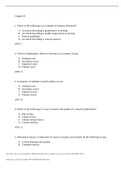
-
NSG 3029 Chapter 05
- Exam (elaborations) • 3 pages • 2022
- Available in package deal
-
- $10.49
- + learn more
Chapter 05 1. Which of the following is an example of empirical literature? A. An article describing a grand theory in nursing B. An article describing a middle range theory in nursing C. Practice guidelines D. An article describing a concept analysis ANS: C 2. Florence Nightingale's Notes on Nursing is an example of a(n): A. Seminal work B. Secondary source C. Empirical work D. Primary work ANS: A 3. A summary of multiple research studies on one A. Seminal work B. Secondary sour...
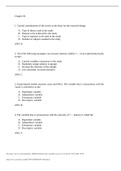
-
NSG 3029 Chapter 06 Exam (GRADED A+) Questions and Answers
- Exam (elaborations) • 3 pages • 2022
- Available in package deal
-
- $10.49
- + learn more
1. Careful consideration of the serves as the basis for the research design. A. Type of theory used in the study B. Purpose to be achieved by the study C. Type of statistics to be used in the study D. Number of subjects needed in the study ANS: B 2. All of the following strategies can increase internal validity *— of an experimental study except: A. Control variables extraneous to the study B. Randomly assign subjects to groups C. Increase the diversity of the sample D. Use consiste...
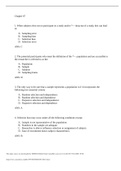
-
NSG 3029 Chapter 07 Exam (GRADED A+) Questions and Answers
- Exam (elaborations) • 3 pages • 2022
- Available in package deal
-
- $10.49
- + learn more
Chapter 07 1. When subjects elect not to participate in a study and/or *— drop out of a study, this can lead to: A. Sampling error B. Sampling bias C. Selection bias D. Selection error ANS: C 2. The potential participants who meet the definition of the *— population and are accessible to the researcher is referred to as the: A. Population B. Sample C. Subjects D. Sampling frame ANS: D 3. The only way to be sure that a sample represents a population is if it incorporates the f...
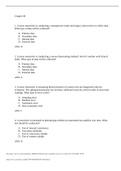
-
NSG3029 CH1 (8) Exam (GRADED A+) Questions and Answers
- Exam (elaborations) • 3 pages • 2022
- Available in package deal
-
- $9.49
- + learn more
Chapter 08 1. A nurse researcher is conducting a retrospective study and using a chart review to collect data. What type of data will be collected? A. Primary data B. Secondary data C. Internal data D. External data ANS: B 2. A nurse researcher is conducting a survey determining students' level of comfort with clinical skills. What type of data will be collected? A. Primary data B. Secondary data C. Internal data D. External data ANS: A 3. A nurse researcher is measuring blood pr...
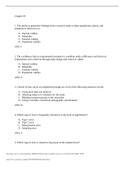
-
NSG 3029 Chapter 09 Exam (GRADED A+) Questions and Answers-
- Exam (elaborations) • 3 pages • 2022
- Available in package deal
-
- $9.49
- + learn more
1. The ability to generalize findings from a research study to other populations, places, and situations is referred to as: A. Internal validity B. Reliability C. External validity D. Population validity ANS: C 2. The confidence that an experimental treatment or condition made a difference and that rival explanations were ruled out through study design and control is called: A. Internal validity B. Reliability C. External validity D. Population validity ANS: A 3. Control of bias ca...
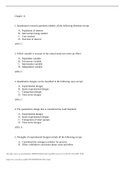
-
NSG 3029 Chapter 12 question and answers ( GRADED A+)
- Exam (elaborations) • 3 pages • 2022
- Available in package deal
-
- $12.49
- + learn more
1. Quantitative research questions identify all the following elements except: A. Population of interest B. Intervention being studied C. Case analysis D. Outcome of interest ANS: C 2. Which variable is not part of the central study but exerts an effect: A. Dependent variable B. Extraneous variable C. Intervention variable D. Independent variable ANS: C 3. Quantitative designs can be classified in the following ways except: A. Experimental designs B. Quasi-experimental designs C. ...
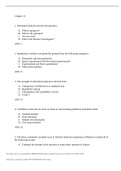
-
NSG3029 CH1 (13) question and answers
- Exam (elaborations) • 3 pages • 2022
- Available in package deal
-
- $9.49
- + learn more
Chapter 13 1. Inferential analysis answers the question: A. What is going on? B. What is the question? C. Are you sure? D. Who is the Primary Investigator? ANS: C 2. Quantitative analyses are generally grouped into the following categories: A. Parametric and non parametric B. Quasi-experimental and Non-Quasi-experimental C. Experimental and Non-experimental D. Time-series analysis ANS: A 3. The strength of inferential analysis is derived from: A. Comparison of differences to standa...
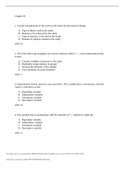
-
NSG3029 CH1 (6) Questions and Answers/Rationale.
- Exam (elaborations) • 3 pages • 2022
- Available in package deal
-
- $9.49
- + learn more
ation of the serves as the basis for the research design. A. Type of theory used in the study B. Purpose to be achieved by the study C. Type of statistics to be used in the study D. Number of subjects needed in the study ANS: B 2. All of the following strategies can increase internal validity *— of an experimental study except: A. Control variables extraneous to the study B. Randomly assign subjects to groups C. Increase the diversity of the sample D. Use consistent, accurate measur...

-
NSG3029 CH1 (6) Questions and Answers/Rationale.
- Exam (elaborations) • 3 pages • 2022
-
- $9.49
- + learn more
ation of the serves as the basis for the research design. A. Type of theory used in the study B. Purpose to be achieved by the study C. Type of statistics to be used in the study D. Number of subjects needed in the study ANS: B 2. All of the following strategies can increase internal validity *— of an experimental study except: A. Control variables extraneous to the study B. Randomly assign subjects to groups C. Increase the diversity of the sample D. Use consistent, accurate measur...
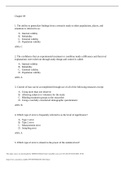
-
NSG 3029 NSG3029 CH1 (8) Questions and Answers/Rationale
- Exam (elaborations) • 3 pages • 2022
- Available in package deal
-
- $9.49
- + learn more
Chapter 09 1. The ability to generalize findings from a research study to other populations, places, and situations is referred to as: A. Internal validity B. Reliability C. External validity D. Population validity ANS: C 2. The confidence that an experimental treatment or condition made a difference and that rival explanations were ruled out through study design and control is called: A. Internal validity B. Reliability C. External validity D. Population validity ANS: A 3. Contro...

How much did you already spend on Stuvia? Imagine there are plenty more of you out there paying for study notes, but this time YOU are the seller. Ka-ching! Discover all about earning on Stuvia


